Best mountain bike forks – the best front suspension for trail, XC, enduro and downhill
The best mountain bike forks will add speed and control to your riding. Here are our top picks for every mountain bike discipline
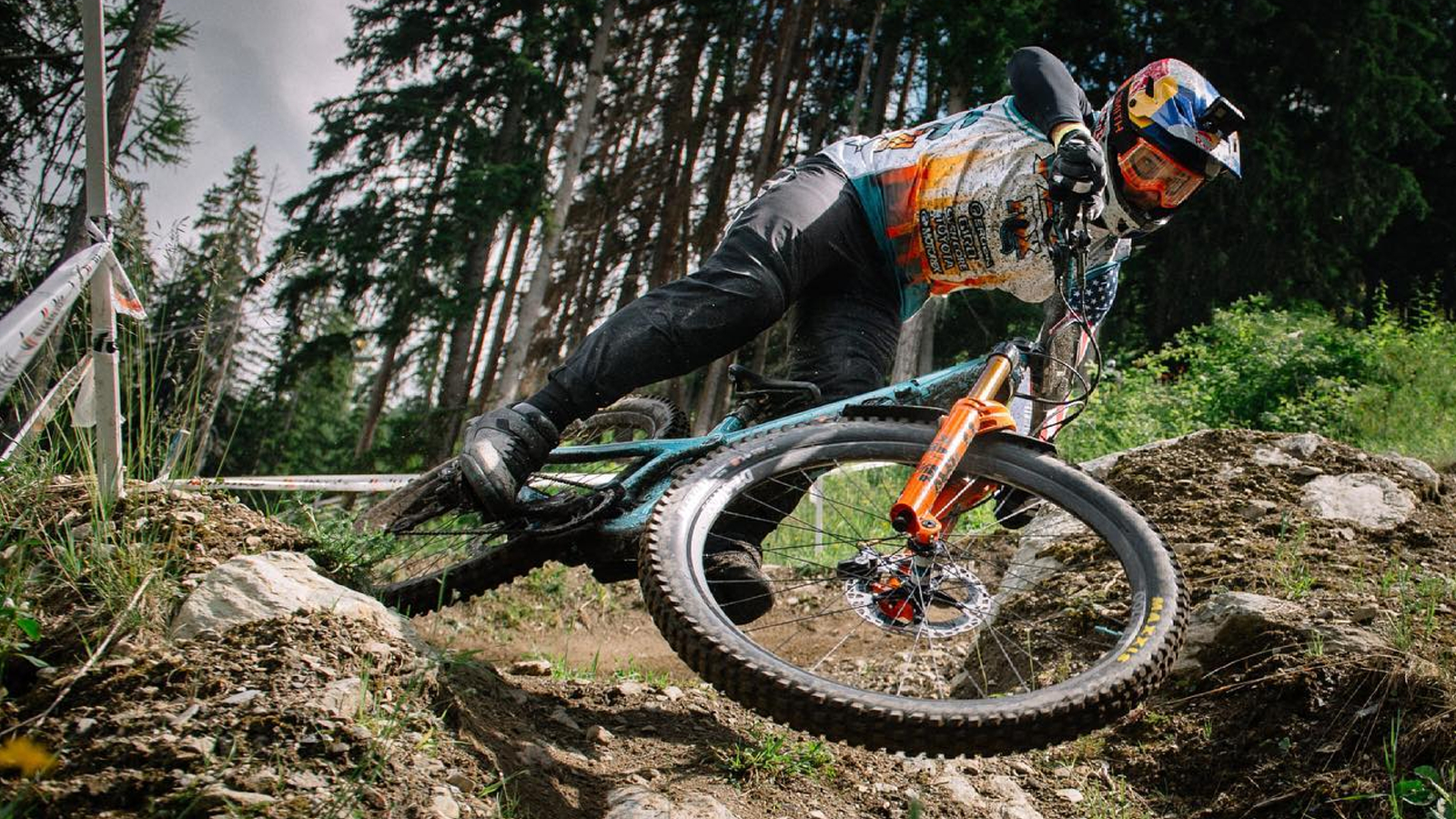
The best mountain bike forks are a vital piece of equipment as they smooth out the trail surface by absorbing impacts and imperfections and, in doing so, improve traction, speed and control over bumpy and gnarly terrain.
However, this wasn’t always the case. Early examples of the mountain bike were bereft of such comfort-providing contraptions and rigid frames were the order of the day. In fact, it wasn’t until the early 1990s that the suspension fork was introduced to both downhill and cross-country racing. While it radically altered the feel and performance of the bikes, these early examples were more of the one-size-fits-all variety and sported between 30-50mm of travel.
Nowadays, the best mountain bike forks are lighter than ever before, be infinitely tuned, have more suspension travel and improved feedback. Which fork is best for your particular setup depends largely on the type of riding/discipline you prefer so we have broken this guide up into cross-country, trail, enduro, and downhill.
When running air suspension, you'll also need one of the best shock pumps to maintain and set it up.
Best mountain bike forks for trail
Why trust BikePerfect
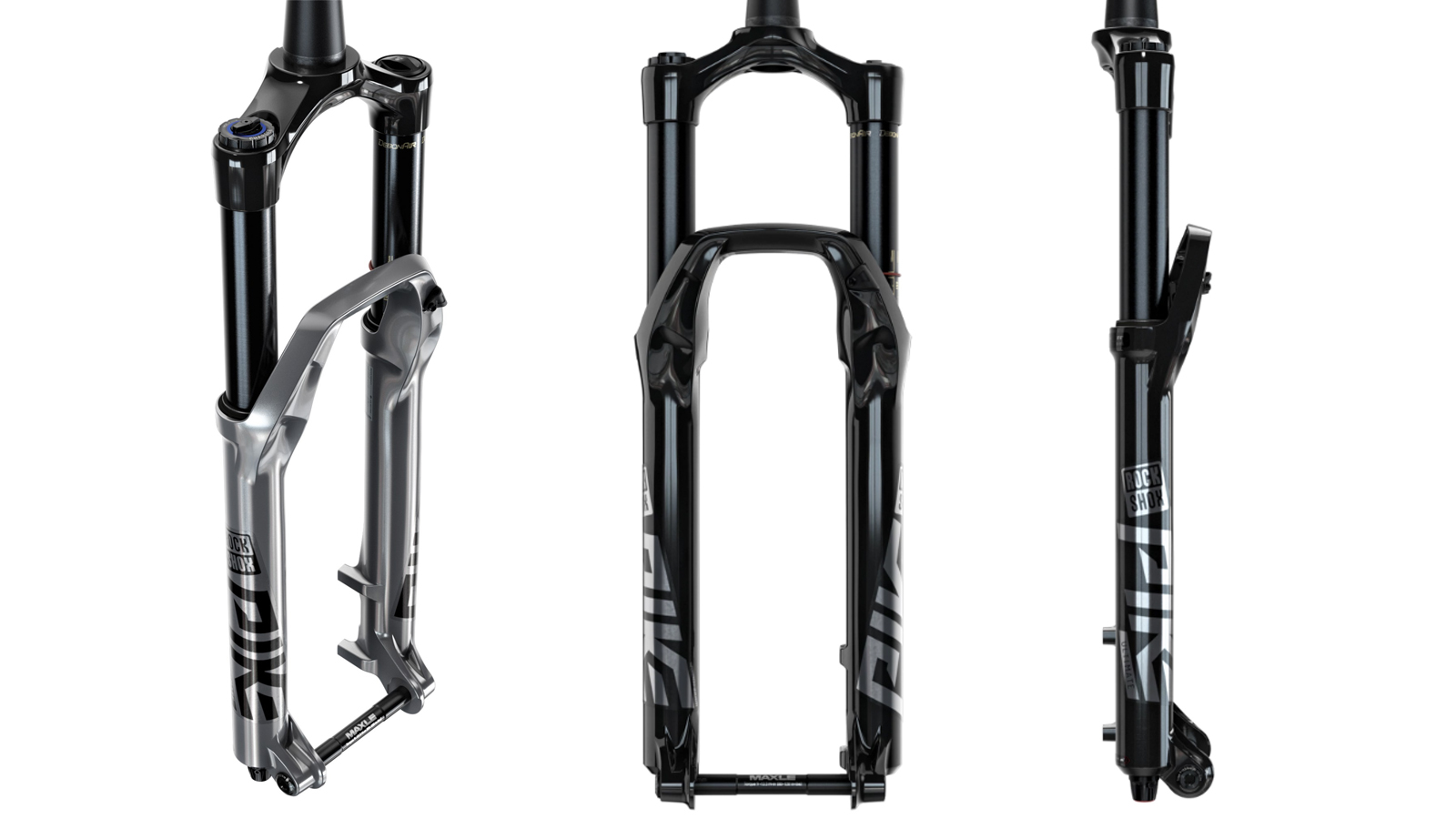
Specifications
Reasons to buy
Reasons to avoid
RockShox's Pike fork has long been the benchmark of trail riding fork performance. The OG Pike was released in 2007 and was an instant hit - from there it has just got better and better.
The fork comes with RockShox's RC2 (or RCT3) damper and is enhanced by new SKF seals and Maxima Plush suspension fluid which keeps everything sliding smoothly together. This means the DebonAir negative spring works well to give excellent small -performance and boost cornering traction.
There's the option to experiment with compression as well as tuning the fork feel with volume spacers. That said we have had great results simply pumping them up to the recommended psi default set-up and hitting the trails.
Out on the trail the 35mm chassis is plenty stiff enough, offering steering precision and accuracy even if the trail starts to get verge on enduro territory. This doesn't come with a weight penalty either.
Read why we gave the RockShox Pike Ultimate RC2 a maximum five starts out of five.
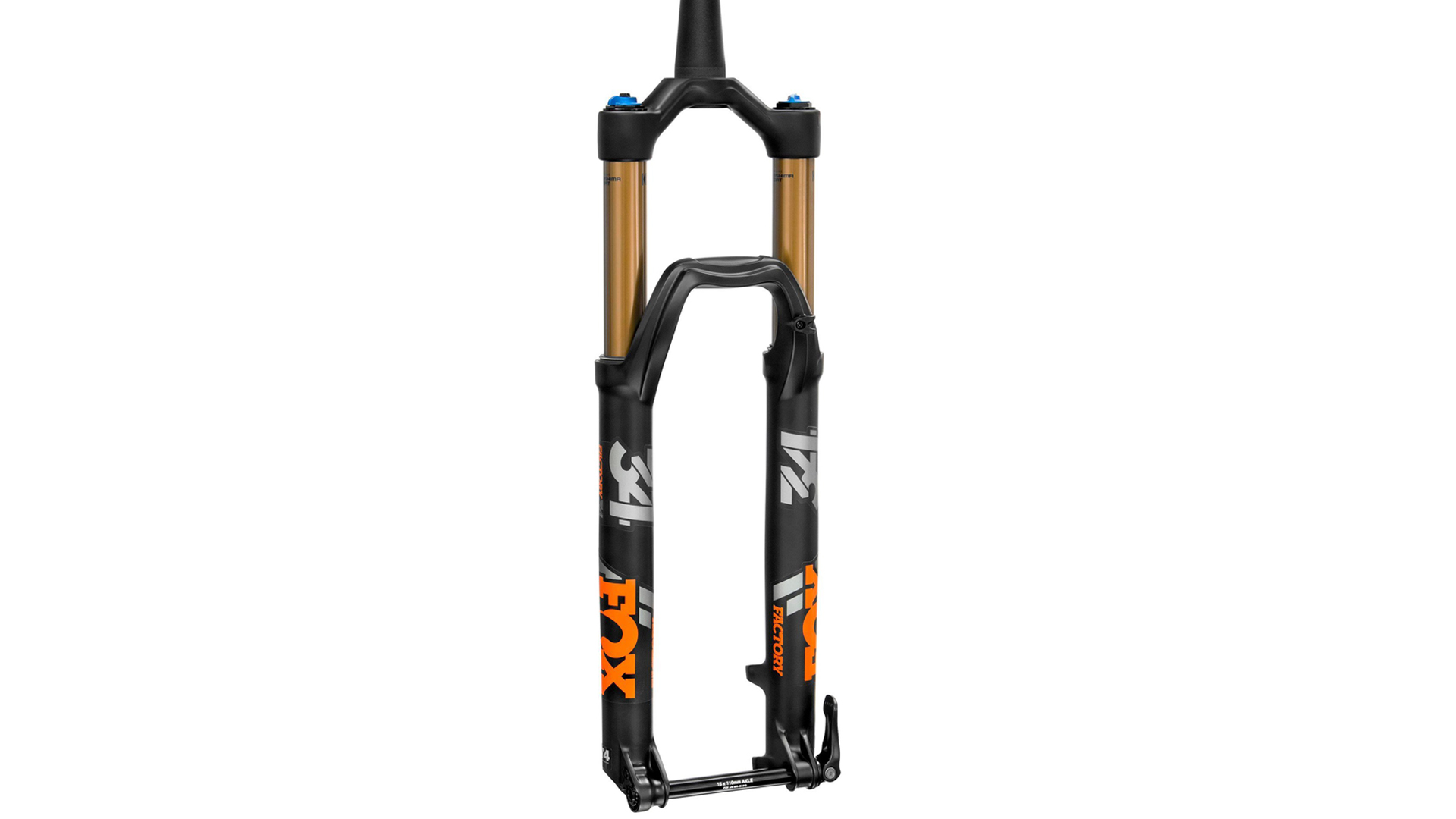
Fox Float 34 Factory GRIP2
Specifications
Reasons to buy
Reasons to avoid
Designed for trail riders, the Fox Float 34 Factory now gets the brand's GRIP2 damper and EVOL air-spring packaged in a super lightweight chassis - 1,769g in 650b guise, which is incredibly light.
As the name references, it gets 34mm stanchions complete with envy-inducing gold Kashima coatings, which are claimed to increases shock smoothness and sensitivity.
Despite its low weight, the Fox 34 is stiff, offering the suppleness and plush damping quality expected from Fox. With the addition of the 38 to Fox's range, it has allowed the brand to spread the available travel across different models, meaning each individual fork now comes in fewer options — the 650b Fox 43 now provides between 130mm and 140mm travel, while the 29er fork only comes in 140mm.
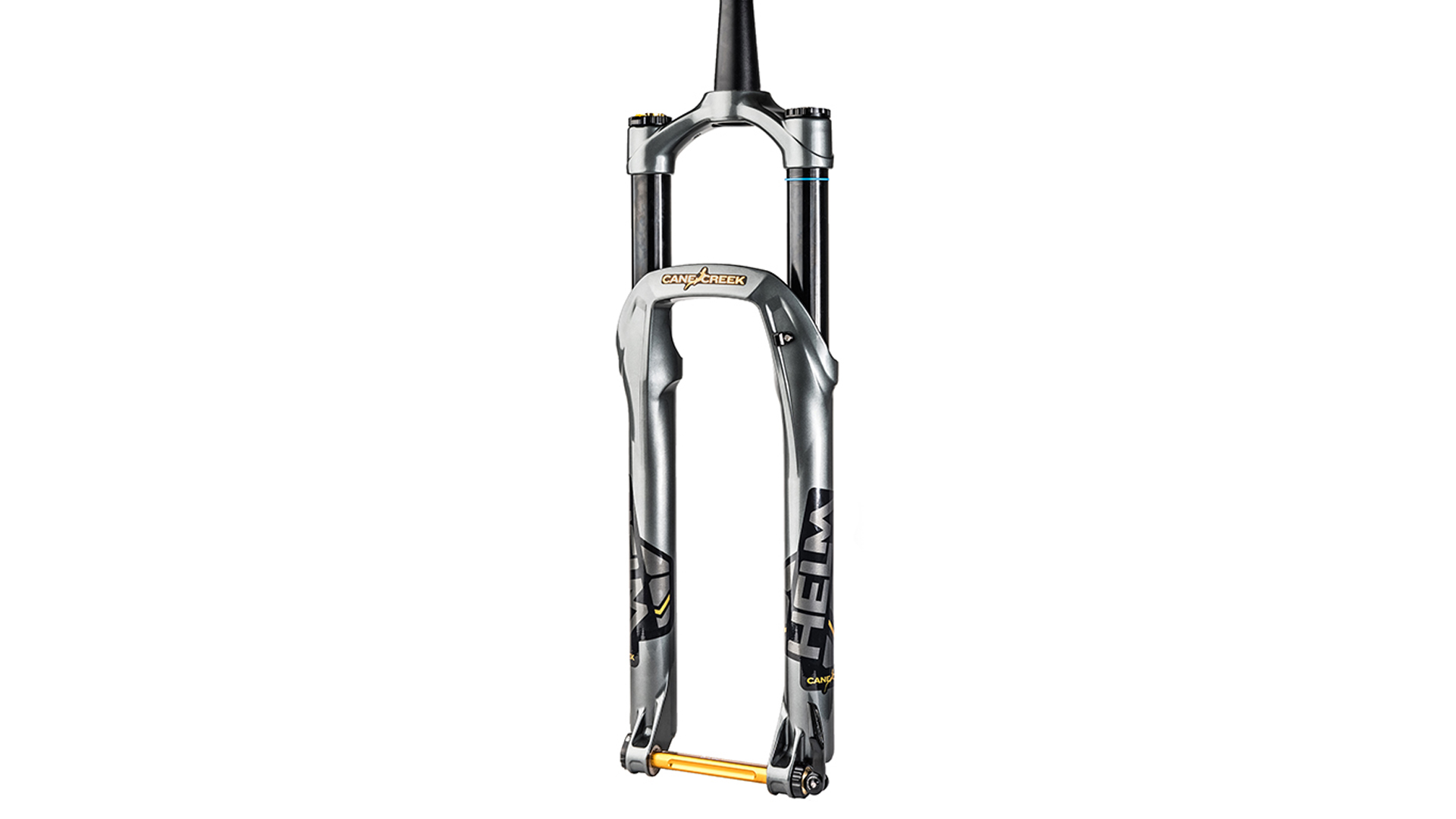
Specifications
Reasons to buy
Reasons to avoid
Cane Creek revamped the veritable Helm Air Fork and what was already a fantastic fork has become even better. It retains the 35mm stanchions, tapered steerer and adjustable travel from 100-160mm, but the guts of the fork are all new.
Most notable is the tokenless air volume adjust, which allows riders to customize how progressive the fork is with the turn of a knob. The air-spring and dampers have also undergone a radical redesign. The new air piston has been re-engineered to reduce friction while also increasing overall air volume for improved traction and suppleness.
The damper too has been updated with new compression and mid valve circuit for increased support and control via the high/low-speed compression and rebound adjustments. Also new are the low friction SKF seals and 2.5 weight oil for a more supple feel.
Not to worry, among all the updates to the Helm, Cane Creek has retained the configurable air spring that allows riders to add or remove air from the positive and negative air chambers independent of one another.
The Helm also benefits from a unique axle system called D-LOC. Apart from keeping the wheel in place, the D-LOC axle thwarts rotational and torsional loads to the upper bushings during cornering and high-speed compression.
For more details, read our Cane Creek HELM Air fork review.
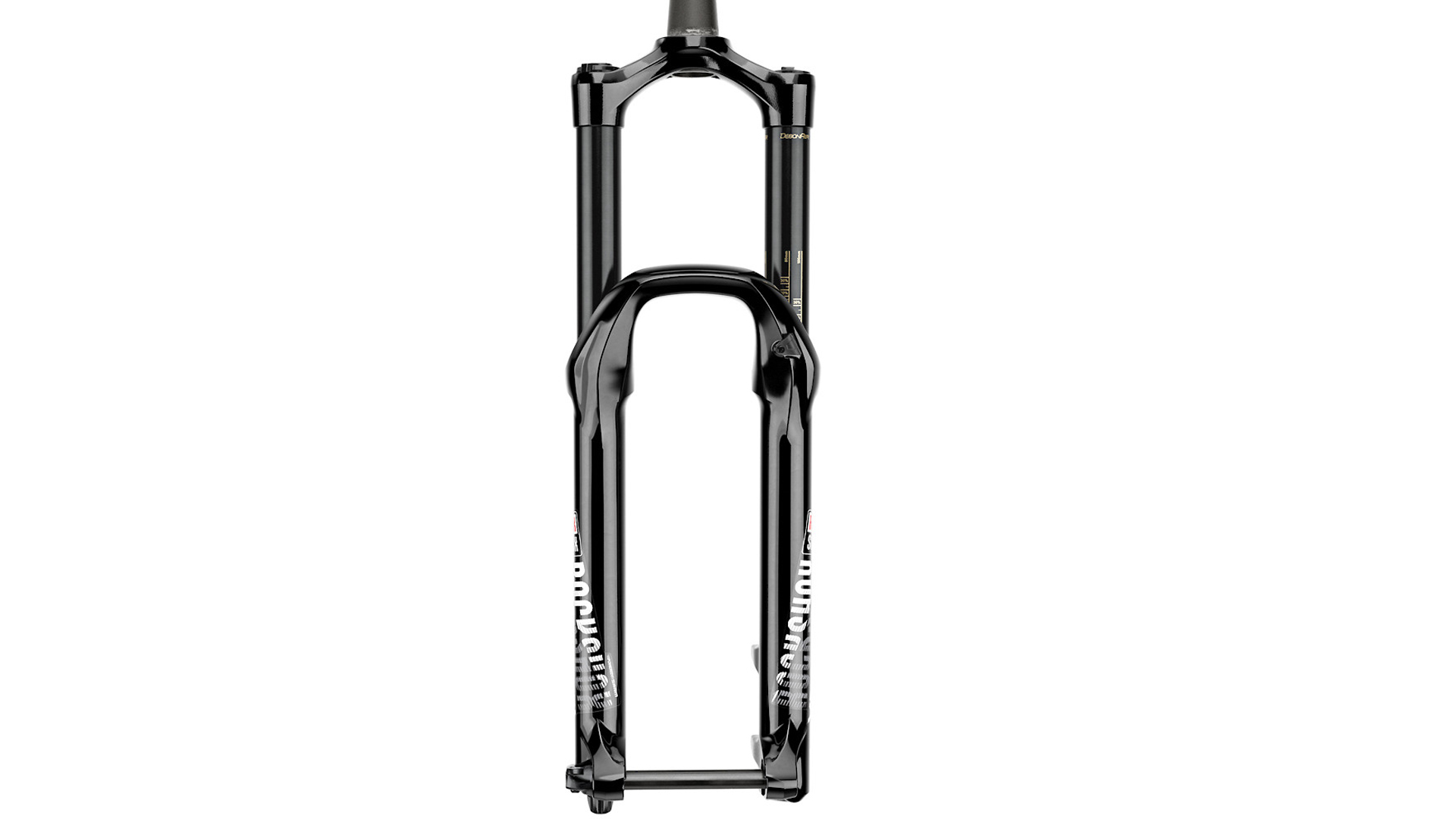
RockShox Yari RC
Specifications
Reasons to buy
Reasons to avoid
While the RockShox Yari shares its DNA with the Lyrik, including its chassis, travel options, offsets and 35mm stanchion structure, it differs by way of its damper system — Motion Control vs the Lyrik’s Charger 2.1 RC2 damper.
Sure, this means it is a little less refined in terms of performance and damping plushness but the Yari is a reliable and robust performer designed to be ridden hard thanks to the stiff chassis and ease with which it can be set up.
If you’re looking for a big-hitting, affordable fork with the pedigree to match it’s hard to find anything as reliable as the Yari.
Best mountain bike forks for enduro
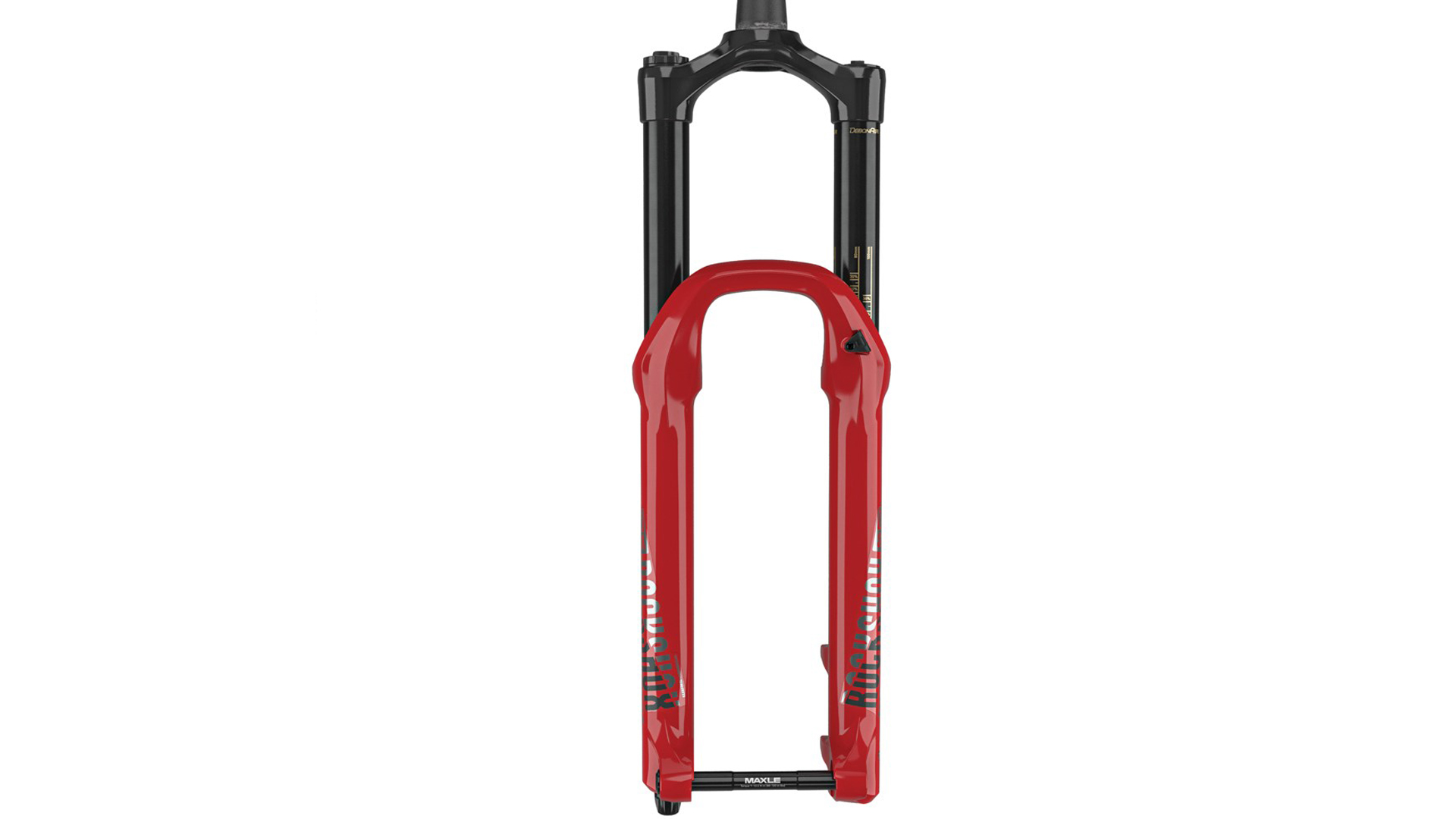
Specifications
Reasons to buy
Reasons to avoid
Bold and expressive, the RockShox Lyrik RC2 was updated - both visually and internally - to better cope with the rigors of enduro racing. As such, the Lyrik gains a fresh lick of red paint which contrasts the black uppers quite superbly - however, it's under the skin where the biggest updates have been implemented.
The air spring shaft is now hollowed out, which RockShox claim boasts 42 per cent more negative spring volume than before resulting in better small-bump sensitivity and coil-spring-like linearity.
The updated Charger 2 RC2 damper has eschewed the three-position lever (this means no lockout) of its forebear in favor of a high-speed, five-click adjuster that is claimed to be more tuneable and responsive to trail nuances.
Find out how the RockShox Lyrik Ultimate fared on test.
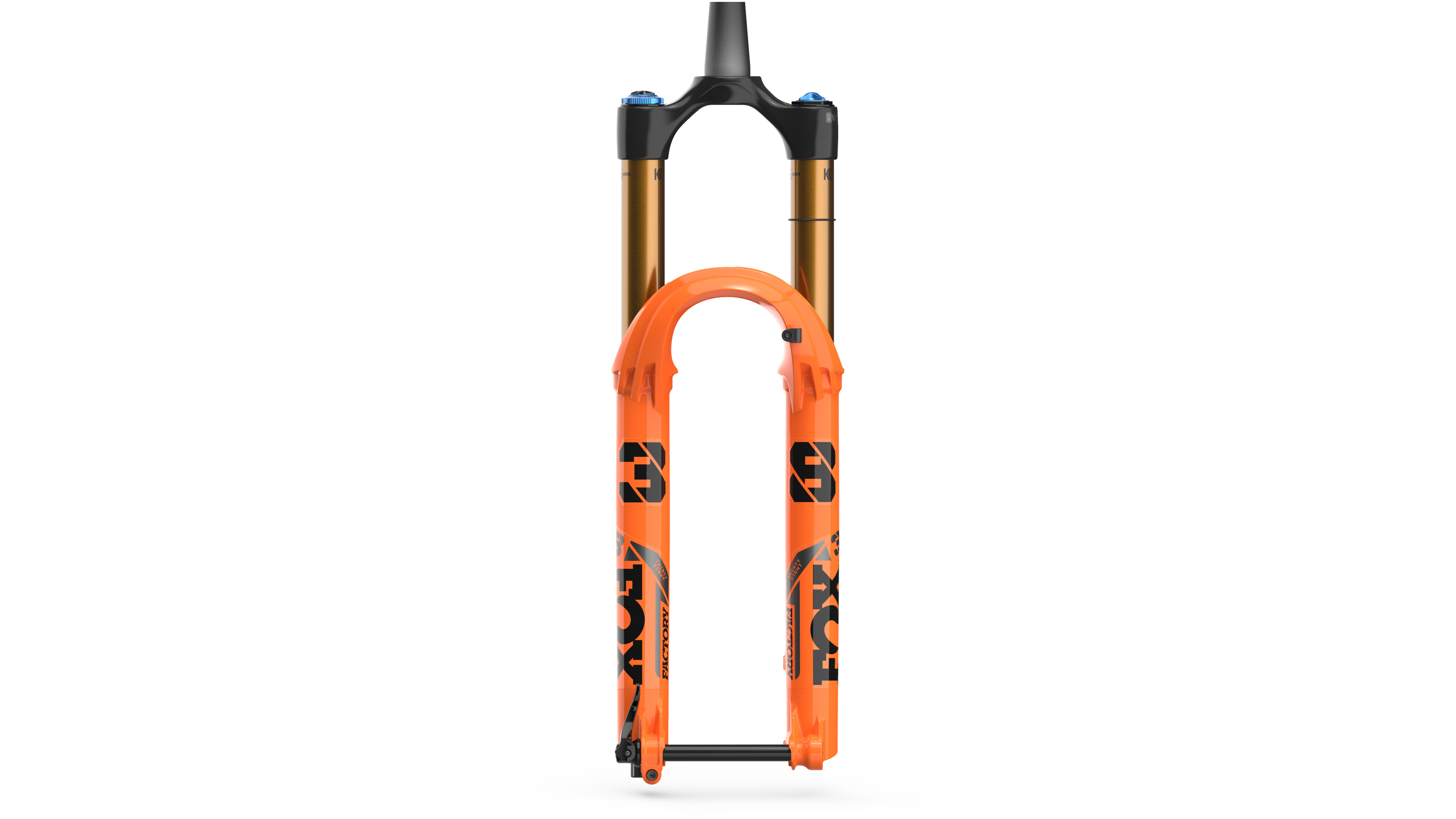
Specifications
Reasons to buy
Reasons to avoid
Unless you are racing EWS, riding massive lines at the bike park or you just hit terrain particularly hard, Fox’s 38 platform is probably going to be a bit overkill. However, if you looking for the best mountain bike fork for enduro they don't come more capable than the 38 Factory fork.
With travel options of either 160mm, 170mm or 180mm, the stiffer structure, and superbly supple internals all work together to produce a superlative experience on the toughest trails.
It's not just a sized-up exterior either, the internals are new, too. That means the fork is better when it comes to control, consistency, sensitivity and response but still super supportive than its thinner-legged comrade, the 36. Despite being noticeably stiffer structurally when smashing through trail furniture, it’s actually more comfortable, too.
We've got more details in our full review of the Fox 38 Factory GRIP2 fork.
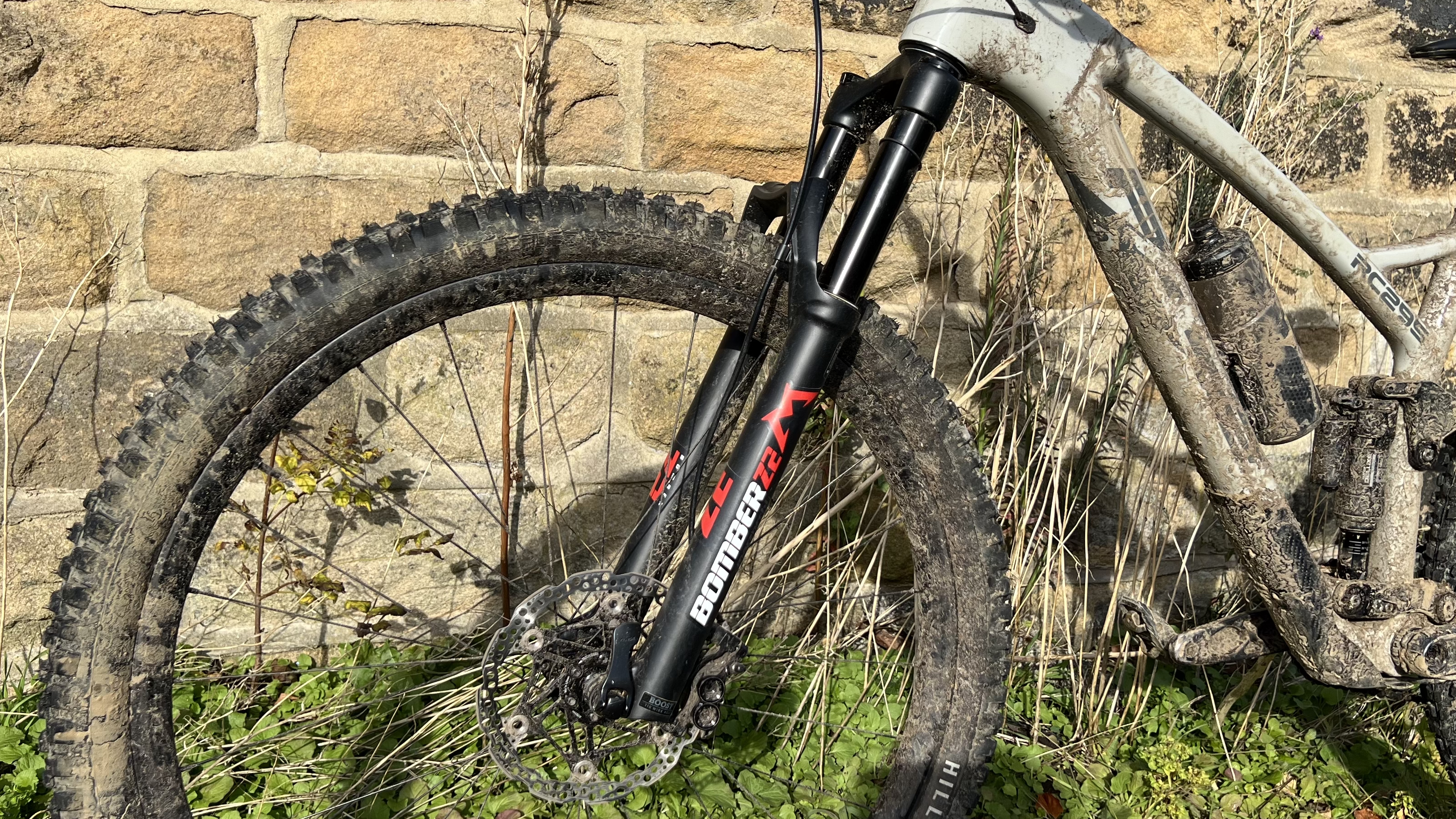
Specifications
Reasons to buy
Reasons to avoid
Marzocchi have based the second generation Bomber Z2 around the entry-level Rhythm version of the Fox 34. That includes the thicker walled 6066 stanchions, seals, other internal components, and Float air spring. That means you can use the same clip-in volume spacers (it comes with none fitted but has four in the box) and switchable air shafts to change travel from 100 to 150mm in 10mm increments. As you can’t even buy a Fox 34 Rhythm aftermarket, the Z2 fills that gap and also costs significantly less than the cheapest 34.
If you’re looking to upgrade the existing fork on a mid-price bike or looking at building a machine for going properly hard on without emptying your wallet or worrying about complicated setup and servicing, then the Z2 is an excellent option. A bit of tuning time definitely pays dividends to get it really snapping on the heels of forks twice its price, but even running the stock setup it’s a great option that's well worthy of consideration.
For more on this very reasonably priced option, read our full Marzocchi Bomber Z2 review.
Best mountain bike forks for cross-country
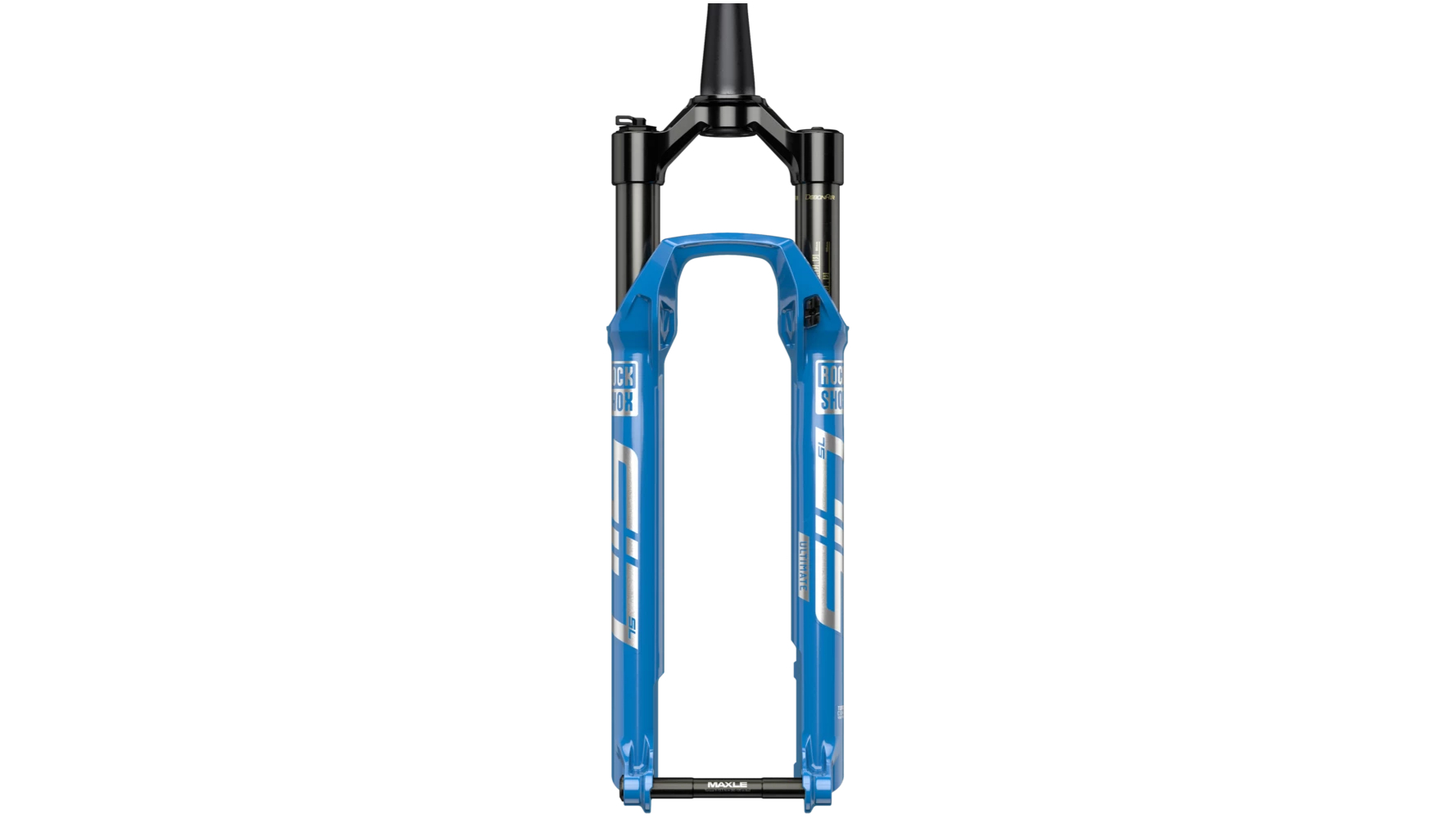
Specifications
Reasons to buy
Reasons to avoid
The RockShox SID Ultimate sits at the very top of the company’s cross-country range of suspension forks. SL denotes that this is the lightest of the SID line-up, focused on covering miles and scaling gradients with ease.
RockShox has done a superb job of dropping weight while improving suspension feel and keeping accuracy competitive for the category. It can take a few rides to soften everything up but once you’ve banked some ride time it’s extremely plush and sensitive too, boosting traction and reducing fatigue on rough terrain - although more aggressive riders will want to add spacers to the linear stroke.
We think they look great, too, plus the space for high-volume tires, competitive pricing, and lots of attention to detail means the SID Ultimate SL is our new benchmark XC race fork, especially when paired with a Torque Cap hub/wheel.
For information on how it performed, read our review of the RockShox SID SL Ultimate fork.
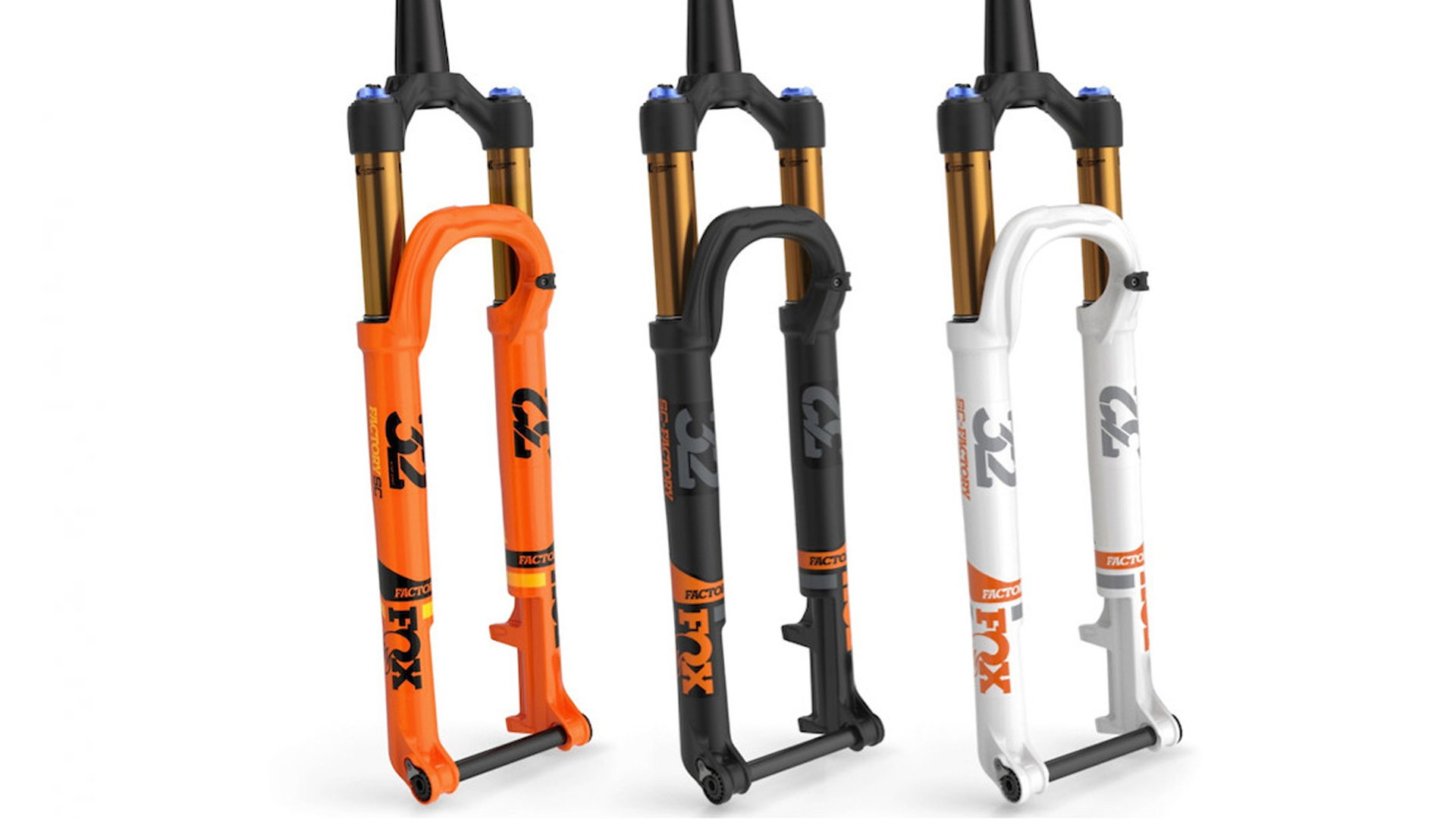
Specifications
Reasons to buy
Reasons to avoid
If it’s a high-performance, lightweight cross-country suspension fork that you’re after, there aren’t many options that can beat the Fox Float 32 Factory Step-Cast.
Compared to many of its Boost-equipped rivals, the Fox 32 is appreciably narrower when measured from leg to leg thanks to a stepped cut-out at the drop-outs. This nifty feature has not only improved lateral stiffness but considerably reduced its weight over its rivals, too.
Fox has redesigned the crown and claims improved stiffness of 20 percent, something that if true will have made the 32 as stiff as the current 34 fork, its bigger, trail-focussed cousin.
We've got the full review of the Fox 32 SC Factory fork if you want to know more.
Best mountain bike forks for downhill
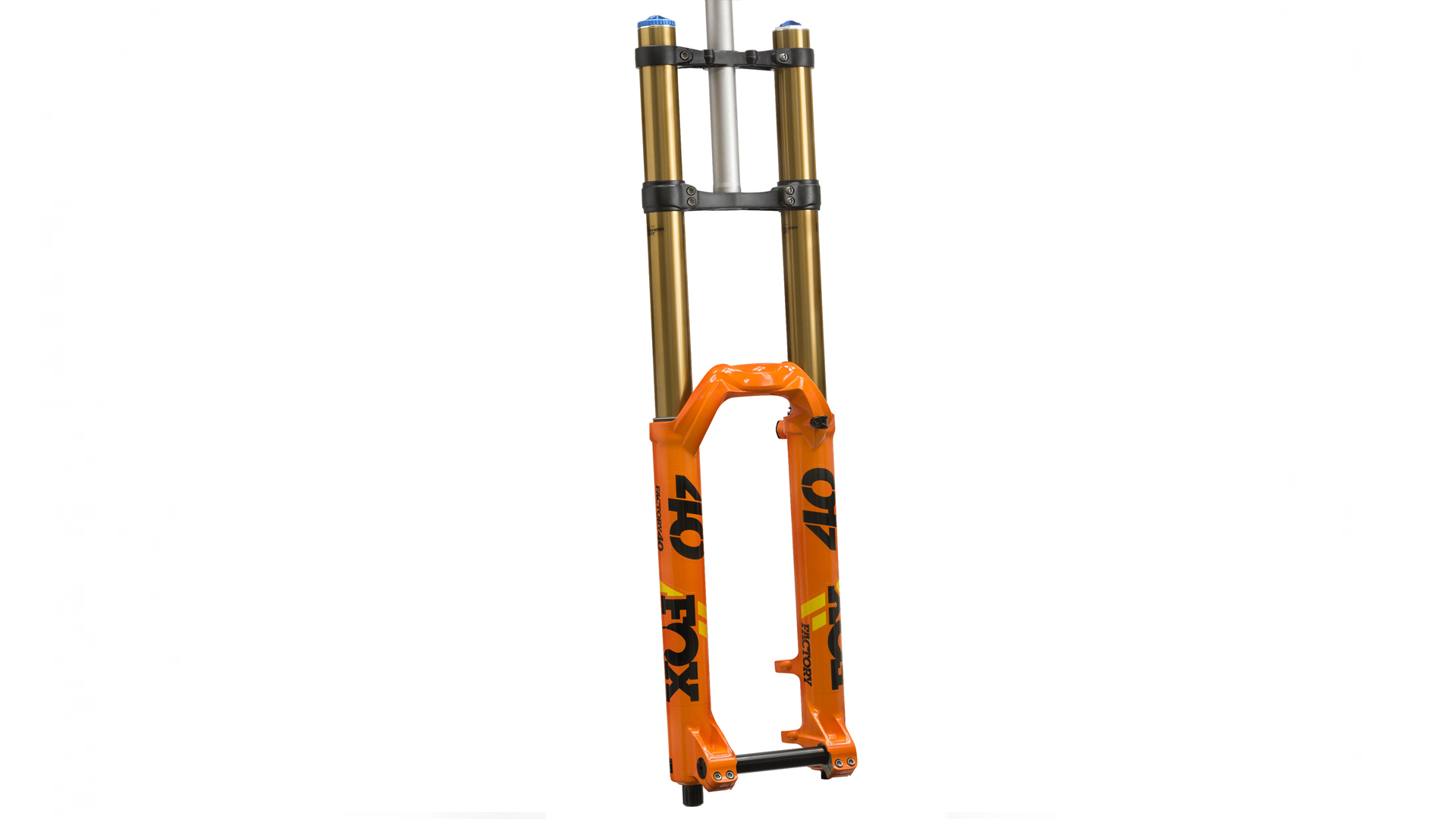
Fox Float 40 Factory
Specifications
Reasons to buy
Reasons to avoid
Fox’s venerable Float 40 Factory fork needs no introduction having experienced prodigious downhill mountain bike success at World Cup level over the past several years.
Built around 40mm stanchions and featuring a whopping 203mm of travel, the fork is naturally very stiff and responsive, if anything, a touch on the heavy side despite weight-saving measures around the crown and lowers.
The large volume of the air chamber means the 40 has a linear stroke, tuneable by way of volume tokens which deliver a compression stroke as plush as any of Fox’s Factory Kashima-coated forks.
Further adjustably can be made by fiddling with the four-way GRIP2 damper that independently adjusts high- and low-speed compression and rebound.
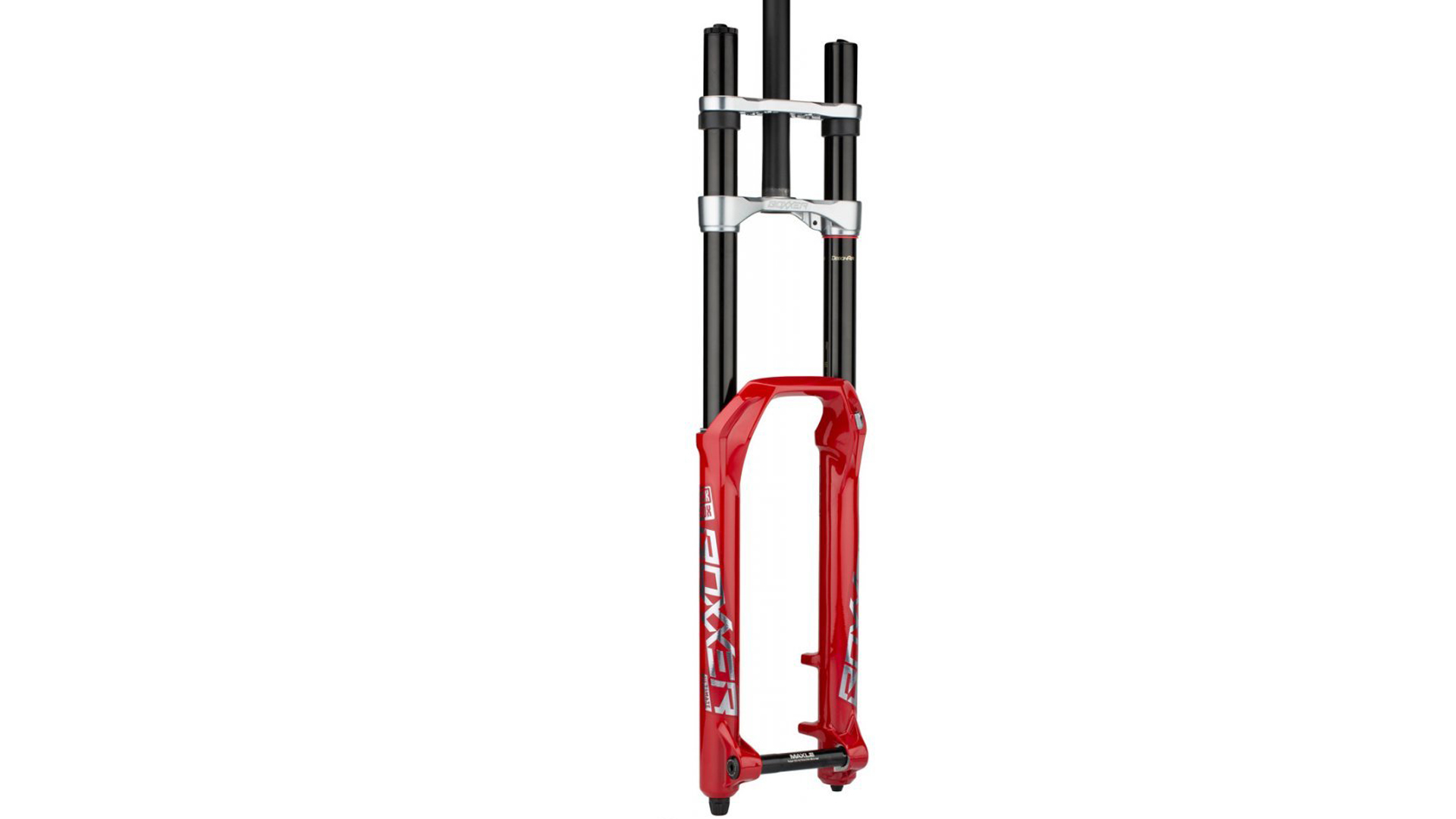
RockShox Boxxer Ultimate
Specifications
Reasons to buy
Reasons to avoid
As far as heavy-hitting downhill suspension forks go, the RockShox Boxxer has been a favorite in the pro rungs for years now. The latest version, the Boxxer Ultimate, has received several tweaks including updated seals and oil, and a Charger 2.1 damper system claimed to make it run smoother than before.
Furthermore, this new damper system allows the fork to stay higher in the travel, compress more linearly (like a coil spring) and rebound with more control for better landings.
A big difference between the Boxxer and its rivals has always been the 35mm stanchion tubing, which is notably slimmer than its 40mm rivals. While this does add some torsional twist, the Boxxer never feels unsettled - instead, it provides pliancy and confidence in spades.
What you need to know about the best mountain bike forks
How do I choose a fork for my mountain bike?
Owing to the fact that the sport now spans myriad disciplines - cross-country, trail/all-mountain, enduro and downhill - the best mountain bike suspension forks have become more specialized in application and function. As a result, each mountain bike discipline places a very different set of demands on the bike and rider so the modern suspension fork varies in terms of travel, spring systems and stanchion thickness. Simply by looking, its possible to see a dramatic difference between the best XC forks and downhill forks.
There are a couple of specific things you should consider before choosing the best mountain bike fork. Firstly is how much travel your bike is designed to be used with, this is important as a fork that is too long or short will upset a bike geometry. Secondly the type of riding you are planning on doing, for example there are a number of forks that cross over around the 160mm mark, some are more trail orientated while others are enduro focussed. Opting for a stronger and heavier enduro fork rather than a trail fork is going to make a noticeable difference to how your bike rides.
The modern mountain bike suspension fork is a complicated piece of kit and naturally comprises many moving parts. It’s worth familiarizing yourself with the fork’s anatomy and the various terms associated with it before making your choice.
How much suspension fork travel do I need?
Modern mountain bike geometries are specifically designed around suspension travel. For example, cross-country mountain bikes feature short-travel forks as the trails are relatively smooth and comprise lots of climbing, so they need to be light and responsive while still providing a decent range of compression. As you move through the various types of mountain biking, the weight, stanchion thickness and travel all increase so as to meet the demanding needs of each discipline.
- Cross-country: 100-120mm travel, 30-32mm stanchion diameter
- Trail: 120-150mm travel, 34mm stanchion diameter
- Enduro: 150-180mm travel, 35-38mm stanchion diameter
- Downhill: 180-200mm travel, 40mm stanchion diameter
The diameter of the stanchion tubes directly affects the fork’s lateral stiffness. The secret here is finding a balance between weight and performance, as wider stanchions are stiffer and heavier than their narrower counterparts but are more resilient to greater impacts from rough terrain and jump landings.
What size axles do mountain bike forks have?
Thru-axles are wider, stronger and stiffer than the old quick-release skewer systems of yesteryear and have been the gold standard on most high-end performance mountain bikes for some time now. The 20mm standard is generally reserved for downhill and enduro while the 15mm thru-axle is found on just about all trail and cross-country bikes.
Until Boost hub spacing came along, the standard for thru-axles was 100mm spacing in the front (110mm for downhill bikes) and 135mm/142mm spacing in the rear. The wider hub and flange spacing offered by Boost has increased the stiffness of 29-inch and 650b wheels even further with the new standards coming in at 110mm (front) and 148mm (rear).
What type of steerer should I get?
There are two steerer types - straight and tapered. A standard steerer tube is straight with a 1-1/8-inch diameter although this size is becoming increasingly uncommon. Most modern forks come standard with tapered steerers as they’re stiffer, lighter and provide a better feel and response than a regular straight steerer.
What are volume tokens/spacers?
Volume spacers or tokens allow you to fine-tune the air volume of your fork. Adding tokens reduces the volume of the air chamber causing the air pressure to ramp up quickly so the spring pressure can be set low, allowing more suspension sag without the risk of bottoming out. Removing tokens will provide the reverse effect.
Is coil or air suspension better?
There are two different spring systems: air and coil springs. Air springs have become the staple choice on modern suspension forks as they are tuneable and have a progressive compression rate — the feel is softer in the first part of the travel and then gets stiffer as more compression is applied. Coil springs on the other hand are found predominantly on downhill bikes. Linear in feel, they provide consistent impact absorption over the range of spring travel. Coil generally has a much smoother compression action too as they have less seal friction.
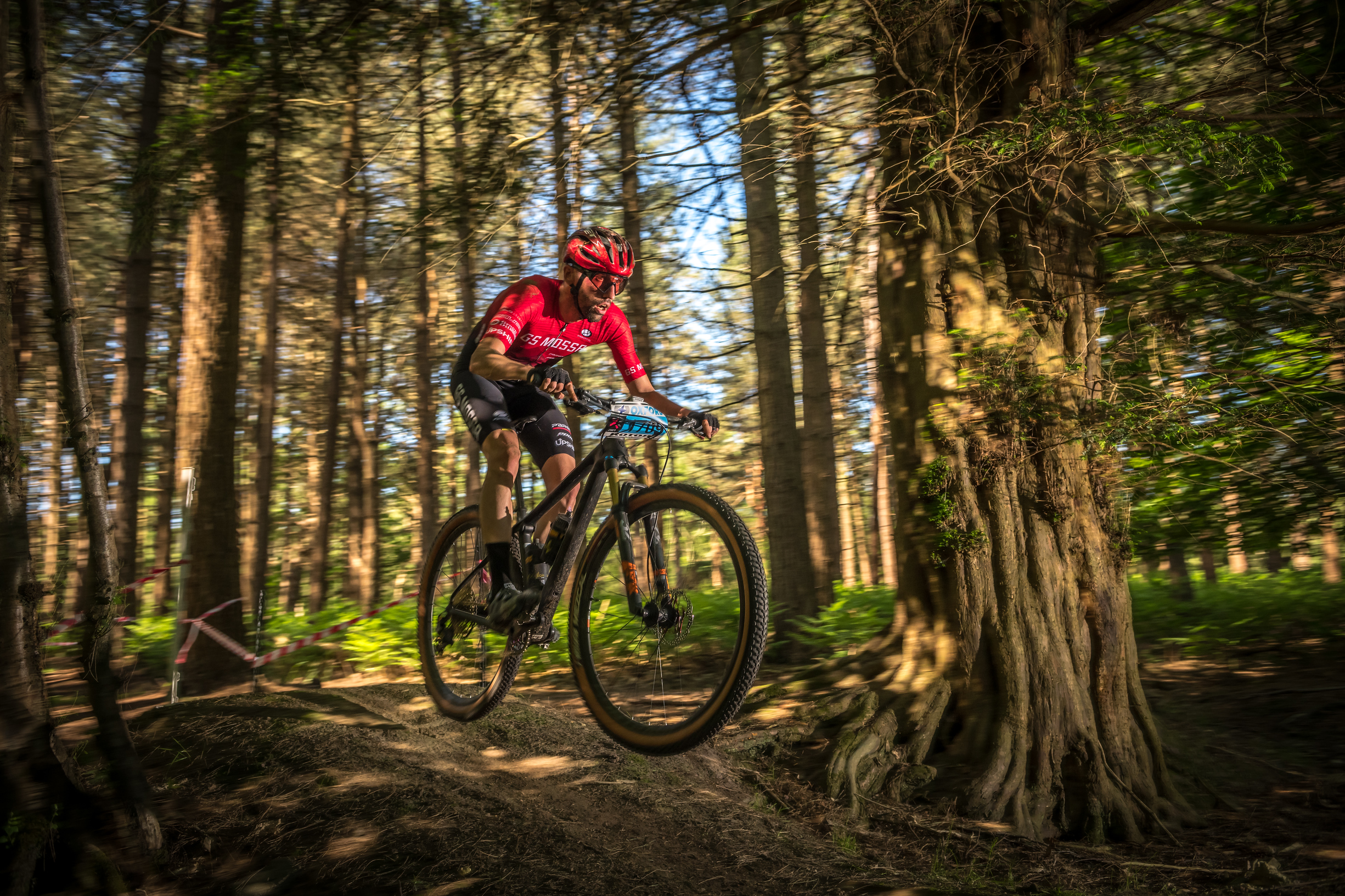
Aaron is Bike Perfect's former tech editor and also the former gear editor of Bicycling magazine. He's tested thousands of bicycles all over the world. A competitive racer and Stravaholic, he’s twice ridden the Cape Epic, raced nearly every MTB stage race in South Africa and completed the Haute Route Alps. Recently, Aaron has also taken up Zwift racing and competes at the highest level of eRacing, the ZRL Premier Division.
Rides: Trek Procaliber 9.9 MTB
Height: 175cm
Weight: 61.5kg
